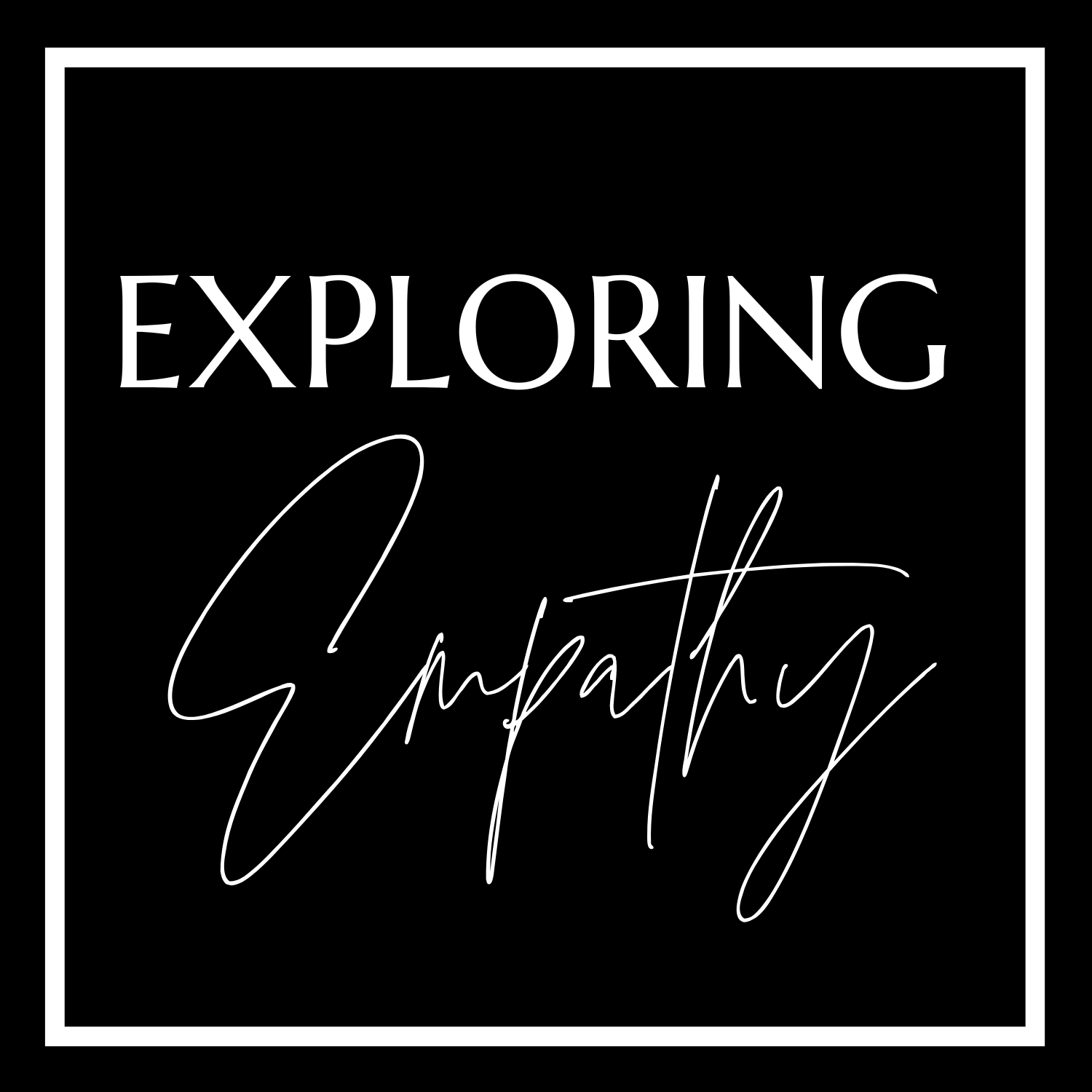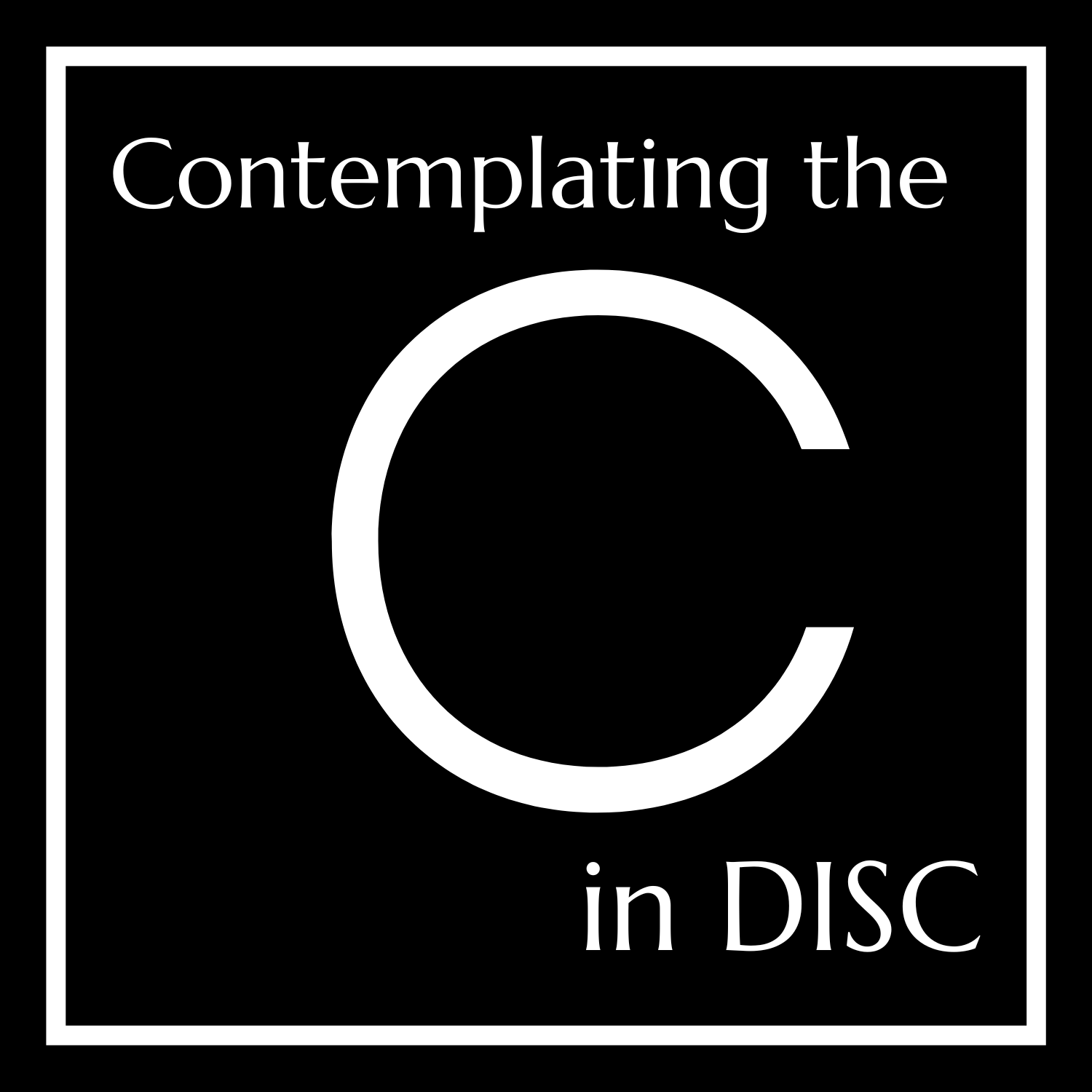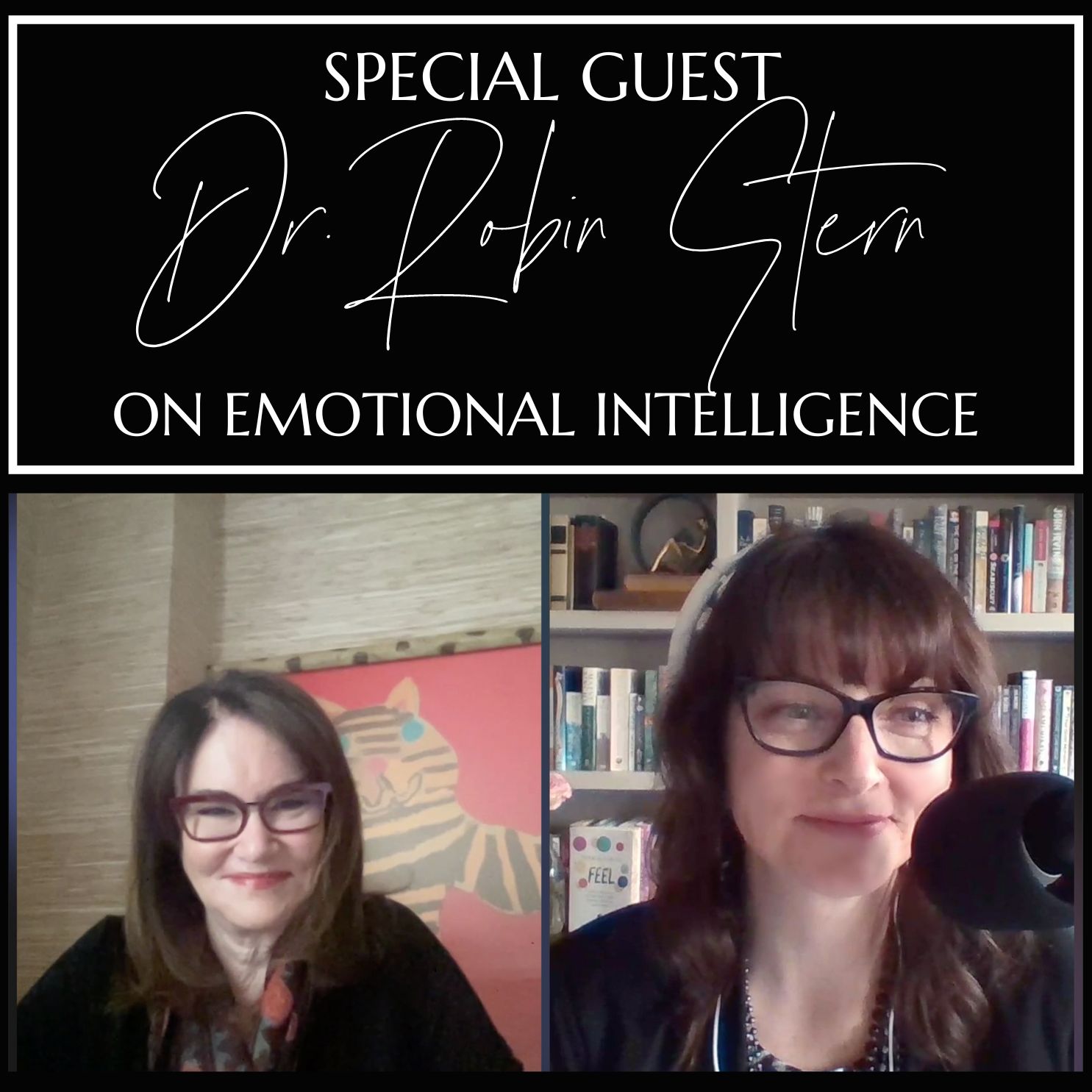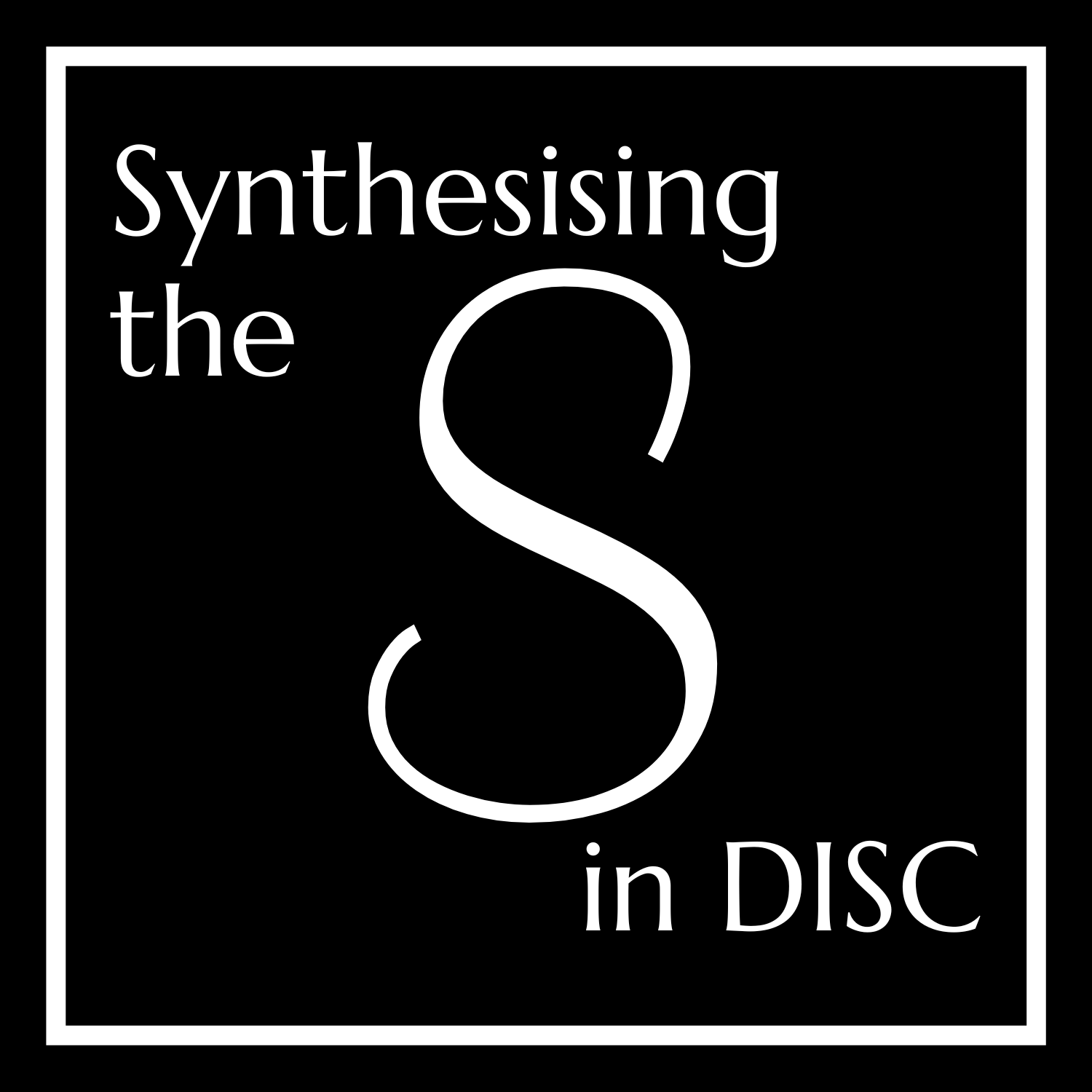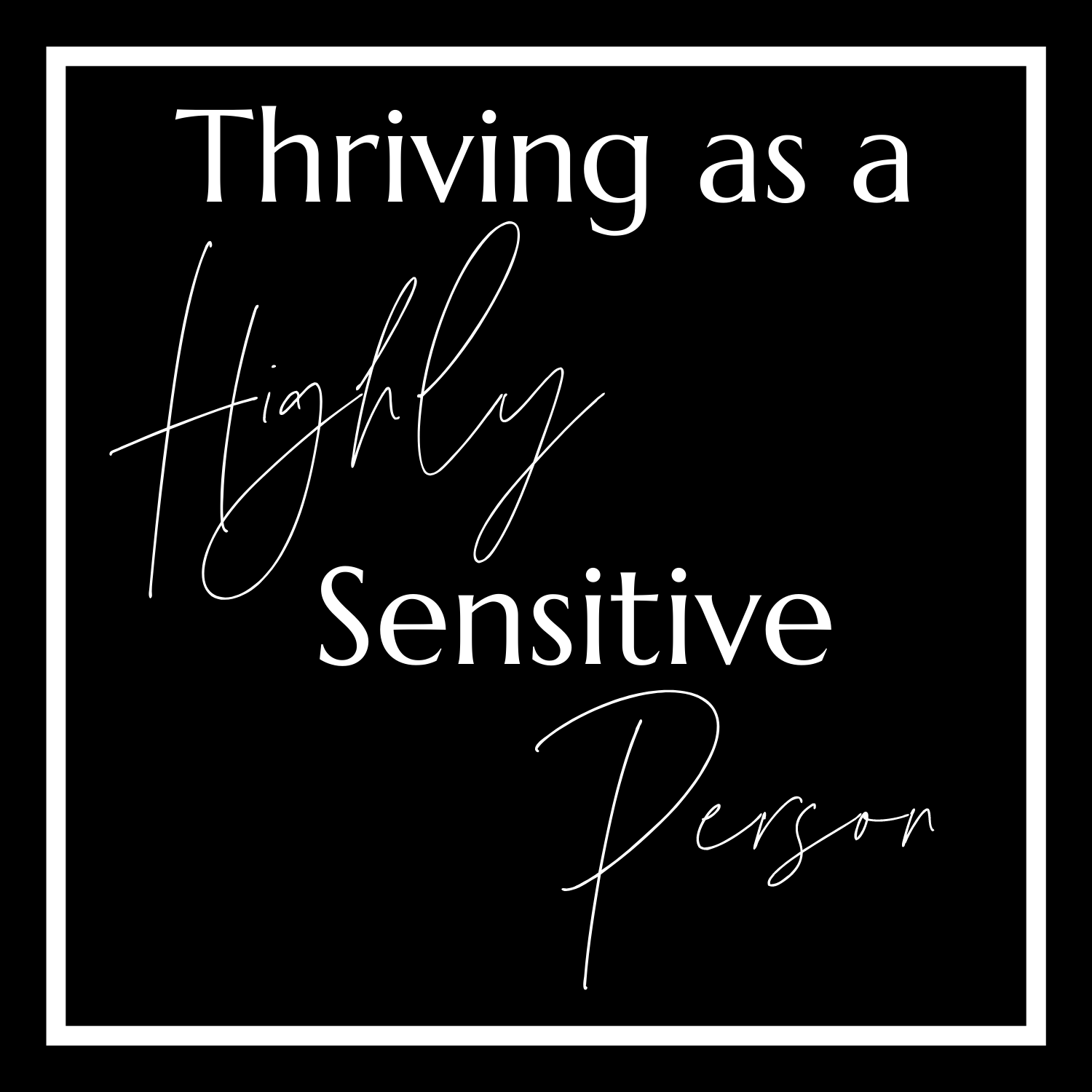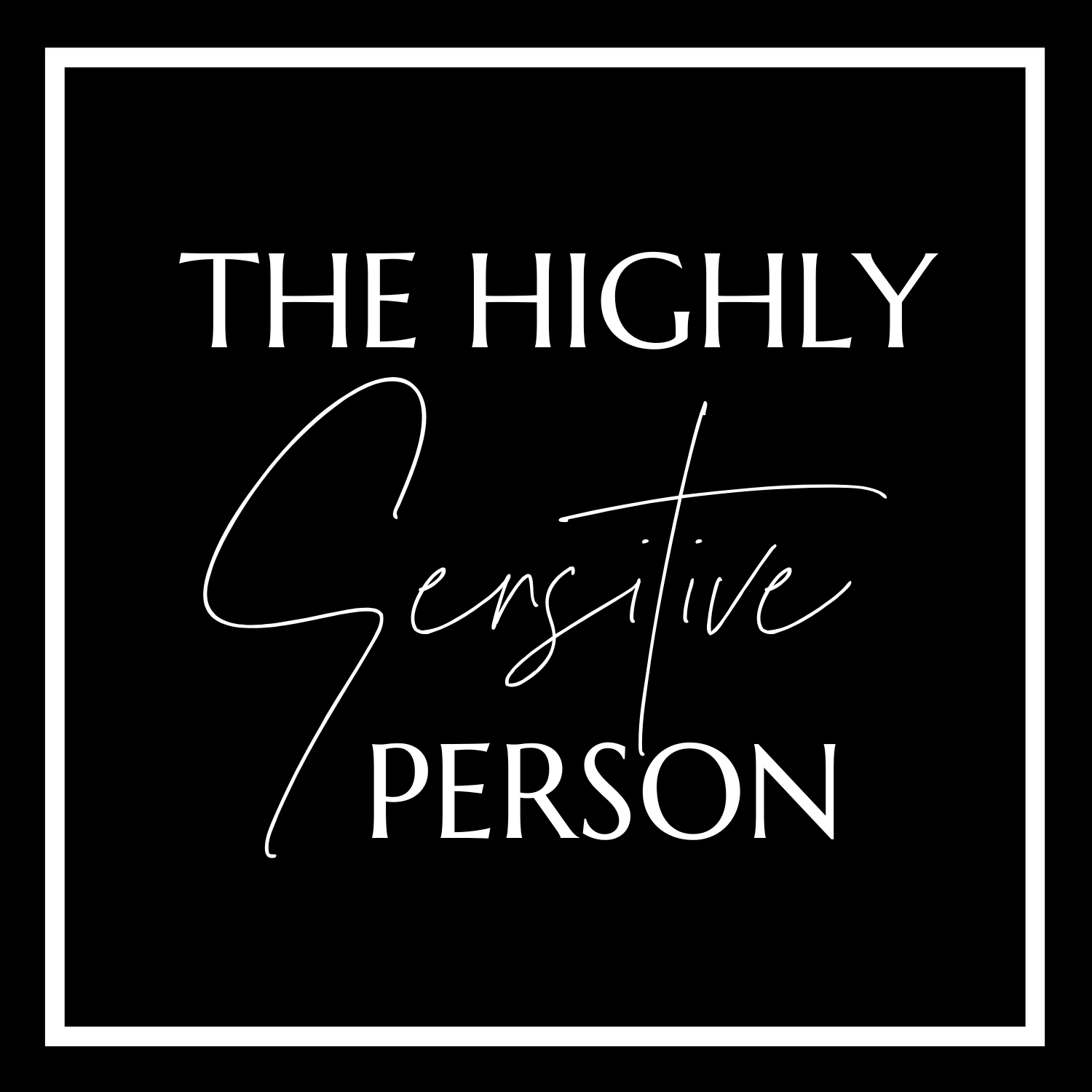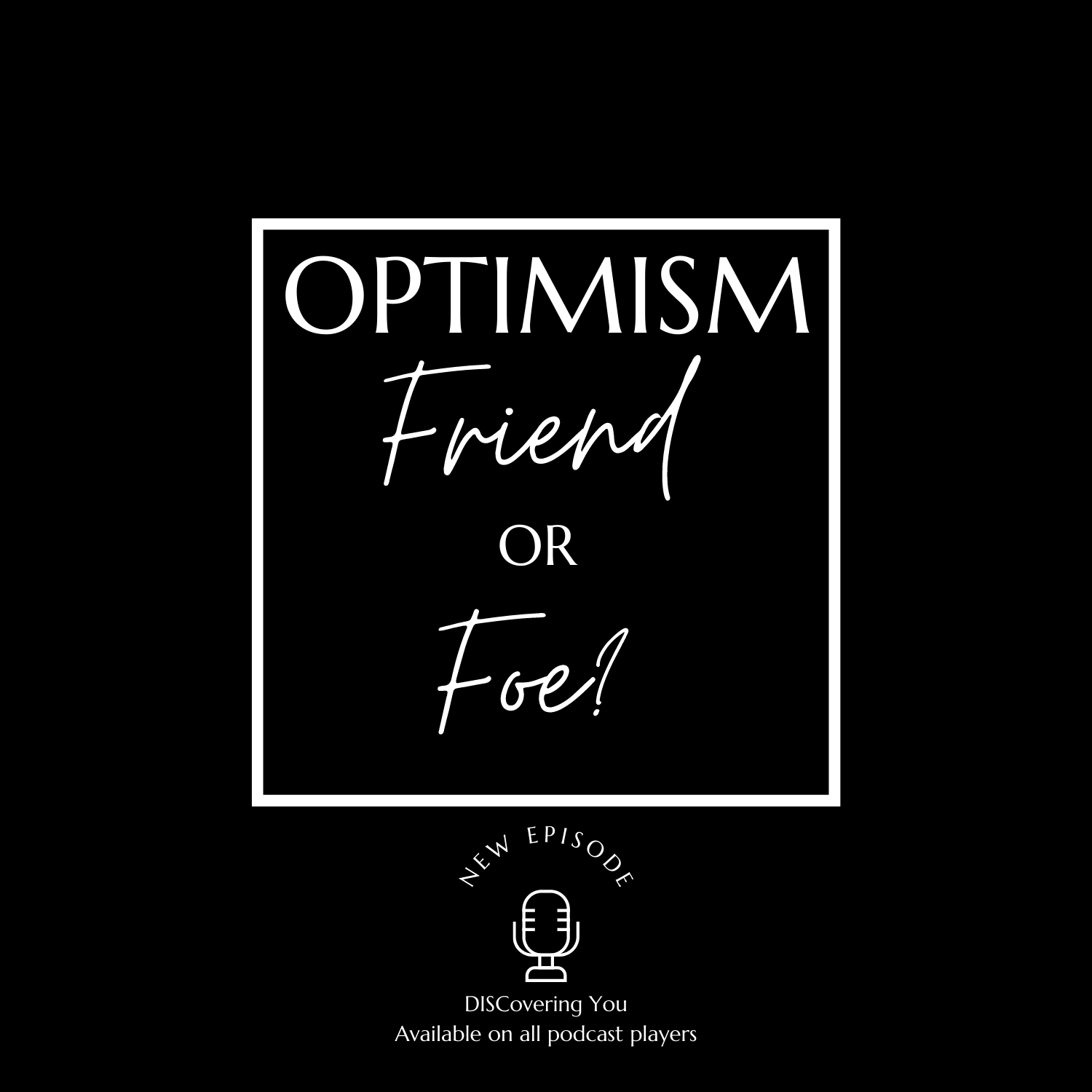Discover DISCovering You
DISCovering You

DISCovering You
Author: Victoria Theriault
Subscribed: 2Played: 56Subscribe
Share
© Copyright 2024 Victoria Theriault
Description
This podcast aims to explore the many ways we can uncover insights into ourselves and others, and how to ensure we are communicating optimally and making real connections. In each episode, we’ll explore a different method of understanding. We’ll look at conduits such as DISC profiling, emotional intelligence, introversion/extroversion, the Enneagram, grit and more. As you’ll soon DISCover, I am incredibly passionate about this topic and I will infuse fun ways to make it easily digestible.
30 Episodes
Reverse
As AI increasingly seeps into our lives, it's more essential than ever to hone our EI (Emotional Intelligence) skills. Why?Emotional Intelligence is what humanizes us, and therefore sets us apart from Artificial Intelligence. These are the facets that simply can not be replaced.On this episode of DISCovering You, I explore the intrapersonal side of EI, which is understanding and managing emotions in ourselves. Mastering the ability to do this, can bring us to new heights of connection and success.National Wine Day is next week, so here is DISC as Wine!High D - Malbec. Full bodied, richHigh I - Sparkling. Bubbly, effervescent High S - Rosé. Balanced, pleasingHigh C - Sauvignon Blanc. Crisp, cleanIf you'd like to learn more about Emotional Intelligence assessments and coaching, let's connect!To learn more about Victoria and her business offerings visit or email her at mailto:discoverwhatworks@gmail.comConnect with Victoria!https://pod.link/1614071253https://discoverwhatworks.org/https://www.facebook.com/VictoriaDISChttps://www.instagram.com/discoverwhatworks/https://www.linkedin.com/in/discoverwhatworks
Today, I’m going to be looking at how to recruit and hire with the help of DISC, but first…It’s World Art Day so to illustrate (pun intended) this theme, here is: DISC as Art D – Cubism. Described as Revolutionary and Rebellious. Picasso is an example.I – Post Impressionism. Colourful, emotive. There’s a focus on the artist’s feelings towards the subject. Van Gogh’s Starry night expresses this.S – Impressionism. Depicting nature and tranquility. Think Monet’s water lilies.C – Precisionism – Using precise, sharply defined geometrical forms. Georgia O’Keefe’s early work of cityscapes embodies this.Okay, let’s get into our topic. I spend a lot of time on this podcast talking about DISC and other tools from a “theoretical perspective”, but today I’m going to get into the very practical applications of using DISC as a recruiting/hiring/onboarding tool. To learn more about Victoria and her business offerings visit or email her at mailto:discoverwhatworks@gmail.comConnect with Victoria!https://pod.link/1614071253https://discoverwhatworks.org/https://www.facebook.com/VictoriaDISChttps://www.instagram.com/discoverwhatworks/https://www.linkedin.com/in/discoverwhatworks
Today I’ll be exploring the topic of Happiness and breaking it down into 4 Categories.But as always, we’ll start with a timely DISC Analogy. We are recording on National Jewel Day, so here are how the DISC factors align with jewels. For those of you who are DISC afficionados or loyal listeners you’ll recognize the DISC colours in this example.High D – Ruby. A vivid shade of red; it symbolizes passionHigh I – Canary Diamond. Yellow in colour; it represents happiness and hopeHigh S – Emerald. Emerald green is associated with balance, harmony and calmness.High C - Sapphire. This shade of blue is associated with wisdom and truth.Let’s get into the topic at Hand. The Four Archetypes of Happiness. You know how I love 4 categories of things LOL. Hint: D I S CTo learn more about Victoria and her business offerings visit or email her at mailto:discoverwhatworks@gmail.comConnect with Victoria!https://pod.link/1614071253https://discoverwhatworks.org/https://www.facebook.com/VictoriaDISChttps://www.instagram.com/discoverwhatworks/https://www.linkedin.com/in/discoverwhatworks
Today, we’re kicking off the first of a series that I’ll be doing over this year. I’ll be interviewing some of my clients (each with a different DISC profile) kind of like case studies, to see how each particular profile operates in the world. A day in the life of…so to speak.Before we dive into that, let’s do this month’s DISC illustration. It’s OSCAR season, so here is:DISC According to OSCAR NOMINATED FILMS! (Not necessarily Best Pic noms, could be acting as is the case for the first one):High D is Nyad - It’s the true story of a woman’s relentless quest to swim from Cuba to Florida. Diana Nyad personifies High D. She’s very direct, driven, and highly competitive. High I is Barbie - I’m pretty sure most people are familiar with this movie. 😊 It provides all the feels. It runs the gamut of emotions from joy to sadness and discouragement, back to empowerment and inspiration!High S is The Holdovers - A story about a grumpy teacher at a Prep school who has to babysit some students over Christmas Break. It focuses on unlikely bonds that are created by spending time learning about, and listening to others, culminating in care and support.High C is Oppenheimer - The movie is very detailed and historically accurate about a physicist and team of scientists who create the atom bomb. The focus on science, confidentiality, and facts over feelings is very High C.Okay, let’s get to it! There’s a strong focus on different personality and DISC profiles on this podcast, but I thought it might have a stronger resonance by talking to someone who embodies the essence of their profile and to take a walk in their shoes. An opportunity to see the profile in action!We’re going to start with High S. Yes, that’s right, I’m not doing it in order. High D’s you always get to be first, so…I’m shaking things up LOLIt’s my absolute pleasure to introduce you to Shawn Zigelstein. Shawn has been in the real estate industry for 20 years. He’s the founder and Team Lead of Team Zold, and ranks consistently in the top 1% of sales reps for Royal LePage. He’s also the winner of the 2022 A.E. LePage Realtor of the Year Award.To learn more about Victoria and her business offerings visit or email her at mailto:discoverwhatworks@gmail.comConnect with Victoria!https://pod.link/1614071253https://discoverwhatworks.org/https://www.facebook.com/VictoriaDISChttps://www.instagram.com/discoverwhatworks/https://www.linkedin.com/in/discoverwhatworks
Since Valentine’s Day is coming soon, I thought it would be timely to discuss Love Languages on today’s episode! And, on that note, I’ve also incorporated Valentines into this month’s DISC illustration.So, here is DISC according to symbols of Love:High D – Red Rose. Vibrant, strong, beware of the thorns though LOL D’s 😊High I – Heart. The quintessential symbol of love, who better to embody it than I’s who wear their hearts on their sleevesHigh S - Love birds – They support each other, they’re loyal (mate for life)High C - Love Letter. C’s value the written word and what better way to express their thoughts!Let’s jump into today’s topic – Love Languages! I’m sure many of you are familiar with the book, “The 5 Love Languages” and this is where most of the source material comes from.I read this book many years ago and had categorized it in my mind, as something for romantic partners only.So, I was surprised when one of my clients, who represents a large organization, mentioned that they had used the Love Languages as a team building exercise in the past. That caught me off guard initially, but then I started to think about it, and realized that it’s applicable to the workplace as well, and so, here we are!The concept that different personalities speak different “languages” (air quotes) is a common thread running throughout my work. You’ve heard me say that High Dominance and High Steadiness are polar opposites. And that in order to truly connect, High D needs to learn to speak High S and vice versa!Same thing goes for love languages. You most likely speak a different one than your partner, or your colleagues.So, what are the 5 love languages? Listen on to learn more. To learn more about Victoria and her business offerings visit or email her at mailto:discoverwhatworks@gmail.comConnect with Victoria!https://pod.link/1614071253https://discoverwhatworks.org/https://www.facebook.com/VictoriaDISChttps://www.instagram.com/discoverwhatworks/https://www.linkedin.com/in/discoverwhatworks
Please enjoy the best of 2023!Optimism; Friend or Foe? https://pod.link/1614071253/episode/c4a3a55699d106cd5337d7388f8adf27The Highly Sensitive Person Part 1 https://pod.link/1614071253/episode/c0f9d9df2d33314a4e3a051852dafd30Thriving As A Highly Sensitive Person https://pod.link/1614071253/episode/29ca59b3d5760c69964fd06b7ed5b82dSynthesising the S in DISC https://pod.link/1614071253/episode/24458e1ada47c0f82764fb3af6c3952aSpecial Guest! Dr. Robin Stern on Emotional Intelligence https://pod.link/1614071253/episode/88ec6c6a9764c5100a1d096dabcf3002Contemplating the C in DISC https://pod.link/1614071253/episode/808195dbbdb18fa5b02d485fa7f41b79Building Highly Effective Teams https://pod.link/1614071253/episode/a26d6f9d3dde58a2f6bdf37786cd7356Exploring Empathy https://pod.link/1614071253/episode/8a5439a280d42be21f82a8b41e66cac7What's Your Tendency? https://pod.link/1614071253/episode/dc98e91adcb291005d260d7218d69879How Do YOU Lead? https://pod.link/1614071253/episode/8fda1cc0c168062dfbe1ad65a13c3397To learn more about Victoria and her business offerings visit or email her at mailto:discoverwhatworks@gmail.comConnect with Victoria!https://pod.link/1614071253https://discoverwhatworks.org/https://www.facebook.com/VictoriaDISChttps://www.instagram.com/discoverwhatworks/https://www.linkedin.com/in/discoverwhatworks
Today we’re going to be chatting about Leadership Styles and what each brings to the table.Before we get to that though, International Cake Day is on the weekend, so of course that means I’m comparing DISC to types of Cake!High D – Devil’s Food Cake – Strong and substantial, both in texture and flavourHigh I – Ice Cream Cake – Whimsical, refreshingHigh S – Pound Cake – A staple item, appeals to most peopleHigh C – Bundt Cake – Perfectly formed, a classicBefore I delve into the topic at hand, different styles of Leadership, let me clarify that you don’t have to be in a job where Leader or something equivalent, is part of your title, or even job description. We are all called upon to be leaders from time to time, whether it’s situational – having an important talk with a colleague, providing feedback, setting the tone for your workspace, even in scenarios in our personal lives.I think there’s a lot of cross-over between leadership at work, and leadership at home, specifically parenting. So, this material is relevant to everyone.To learn more about Victoria and her business offerings visit or email her at mailto:discoverwhatworks@gmail.comConnect with Victoria!https://discoverwhatworks.org/https://www.facebook.com/VictoriaDISChttps://www.instagram.com/discoverwhatworks/https://www.linkedin.com/in/discoverwhatworks
Do you meet, or resist expectations?How you answer this question, depends on which of the 4 Tendencies you gravitate towards.Upholder: meets inner and outer expectationsQuestioner: meets inner but resists outer expectationsObliger: meets outer but resists inner expectationsRebel: resists inner and outer expectationsUnderstanding your own Tendency, as well as your colleagues', can be instrumental for workplace collaboration and cohesion.You can find the link to Gretchen Rubin's quiz here: https://gretchenrubin.com/four-tendencies/Since it's Halloween, here is DISC according to Candy!High D is Warheads. Extreme and intenseHigh I is Sweetarts. Sweet parts and messages of loveHigh S is Butterscotch Candies. Comforting, long lastingHigh C is Smarties. Smart and structuredTo learn more about Victoria and her business offerings visit or email her at mailto:discoverwhatworks@gmail.comConnect with Victoria!https://discoverwhatworks.org/https://www.facebook.com/VictoriaDISChttps://www.instagram.com/discoverwhatworks/https://www.linkedin.com/in/discoverwhatworks
Today, I’m going to be talking about Empathy and the role it plays in our personal and professional lives.If you’re a regular listener, you’ll know that before I get to this it’s time (in the words of my teenage daughter) to make everything about DISC LOL! Here’s this episode’s DISC Analogy - DISC according to… World Cities:High D – I’ve got to give it to NYC! Loud, Energetic, Work Hard, Play Hard VibesHigh I – Could it be anything other than the city of Love? Paris of course! Romantic, evocativeHigh S – Geneva. Neutral, peacefulHigh C – Singapore. Ordered, disciplinedOkay, today’s episode is about Exploring Empathy. I touched on it briefly during the EQ episodes (5 & 6) because Empathy is one of the cornerstones of Emotional Intelligence.It’s a key ingredient in building successful interpersonal relationships whether in your personal life or the workplace. And it plays a key role in Leadership. Empathetic leaders propagate loyal team members who want to work hard for them because they feel inspired, valued and seen for who they are and what they’re contributing.Leading with an absence of empathy creates disconnectedness, resentment and a lack of engagement and productivity.Wondering how to gauge your level of Empathy?To learn more about Victoria and her business offerings visit or email her at mailto:discoverwhatworks@gmail.comConnect with Victoria!https://discoverwhatworks.org/https://www.facebook.com/VictoriaDISChttps://www.instagram.com/discoverwhatworks/https://www.linkedin.com/in/discoverwhatworks
Happy September. I'm excited to be back and I hope everyone enjoyed their summer. Today's episode, I'm going to talk about the importance of building a well-balanced team, but first, since it's back to school, back to work time, and for many a return to their exercise regime.Here is disc according to fitness, high D, weightlifting, competitive results driven high eye is dance, cardio, fun and interactive. High S is yoga, calm, mindful high. C is Pilates structured precisely. If you're a new listener, or really just a reminder to our regular listeners, these analogies are designed to illustrate the essence of each DISC factor. It doesn't necessarily mean that if you have a high D you're gonna lift weights, although I do have several friends and clients who this matches perfectly. Enjoy today's episode and let us know your thoughts!To learn more about Victoria and her business offerings visit or email her at discoverwhatworks@gmail.comConnect with Victoria!https://discoverwhatworks.org/https://www.facebook.com/VictoriaDISChttps://www.instagram.com/discoverwhatworks/https://www.linkedin.com/in/discoverwhatworks
On today’s episode I’m rounding out the exploration into each DISC factor with the 4th and final one, High C but not before this month’s DISC illustration. World Music Day is next week, so here is DISC according to genre of Music:High D - Rap. Direct, ProvocativeHigh I – Pop. Upbeat, funHigh S – Jazz. Smooth, mellowHigh C – Classical. Precise, cerebralOkay, here we go – the last factor (but certainly not least!) in DISC; Compliance. This word is often met with distaste, both from those who have a High C, YES and those who don’t!It’s not exactly a fun word, is it? Similar to Dominance in sounding off-putting – the difference is that High D’s don’t mind it (LOL) whereas High C’s do. And you may remember that with Dominance, I said there were a lot of D adjectives that are sometimes used and even swapped out to represent that letter.The same occurs with C. It is sometimes referred to as Conscientious (that works) Cautious (yep) Correct (totally on brand).www.discoverwhatworks.org
Today on the show we have a very special guest! Dr. Robin Stern is the co-founder and associate director of the Yale Center for Emotional Intelligence. She's an author, a speaker, and a licensed psychoanalyst with 30 years of experience.Dr. Stern coined the phrase Gaslight Effect in her book in 2007, and most recently, she is the host of the Gaslight Effect podcast. I had a great conversation with Robin Stern and we're going to jump right in. Enjoy!
The 3rd DISC Factor; Steadiness.People who are High in Steadiness are amiable, dependable, thorough, tenacious, and good listeners. Here is a point of distinction. When we discussed HIGH D and HIGH I, their behaviour is more externalized and they are definitely more the “talkers” whereas HIGH S and C, is more internalized behaviour and they are more the listeners.S’s enjoy helping others and this often turns into a “purpose” in their personal and professional lives. They are drawn to careers in “helping professions” such as teachers, health care professionals, counselors, mentors.Famous examples are…Barack Obama, Princess Kate, Dr. Sanjay Gupta.Listeners, based on this quick description do you think you may be High in the Steadiness factor? Listen on for a quick quiz to find out!If you are interested in connecting with Victoria for team building, strategic onboarding, coaching, or speaking engagement. You can contact her at discoverwhatworks@gmail.com. Visit https://discoverwhatworks.org/opportunities/ for details.
Before we dive into our topic, here’s today’s DISC analogy. We are a few days away from National Cocktail Day, so of course, I’m going to break down DISC according to cocktails.High D – Manhattan. The summary I found on a recipe list described it as: strong in all ways, with some slight bitterness. Not for the faint of heart…High I – Mojito. Fun, refreshing, vacation vibes.High S – Gin Fizz. While this sounds bubbly, it’s actually described as being silky, smooth. Whipped egg whites contribute to its slick texture.High C – Classic Martini. Precision is key in making this drink - especially in measuring the equal parts of dry and sweet vermouth.Who wants a cocktail now? Did you know that Canada has a national cocktail – can you guess what it is?Okay, back to our topic. In Part 1, I touched on the concept of HSP and some ways to identify if you, or someone close to you, might be one. We’ll have another quick look at that, but today I’m going to focus on what happens after you know - what are the next steps? How do you take this newfound awareness and ensure that you use it as a superpower, and not a limitation as others (or even you) may have seen it.As a quick reminder, the word sensitive is not referring to being emotional, it’s about reacting to stimulation. HSP’s are more easily stimulated by noises, lights, pain, hunger because of their high levels of SPS (Sensory Processing Sensitivity)Since HSP’s represent only 20 to 30 percent of the population, the world isn’t really set up to accommodate. So…make sure YOU understand what you need to thrive, and protect your superpower.For more information or to book a session or workshop with Victoria visit www.discoverwhatworks.org or reach out at discoverwhatworks@gmail.com
Today’s episode really hits home and you’ll find out why in a few moments. But first, it’s time for this month’s DISC example…For today’s comparison, I decided to use TV show genres. Soooo:High D is Action/Thriller – High Stakes, something to get the adrenaline pumping. Some examples are Succession (and honestly, most of the characters on this show are High D’s LOL) and Ozark.High I is a Rom/Com (Romantic Comedy) – Fun, light, guaranteed to put a smile on your face. For instance, Emily in Paris, or Bridgerton.High S is a Family Drama – Showcasing ongoing relationships and a deep exploration into character arcs and follow through. This is Us and Parenthood are a couple of examples.High C is Documentary – Analytical and all about learning! For instance, Planet Earth or My Octopus Teacher.Back to the subject of today’s episode. Do you know what an HSP is?The acronym stands for Highly Sensitive Person and was coined by the Psychologist, Elaine Aron, who self describes herself as an HSP and wrote an extensive book on the subject. Find out more in today's episode!Worth a listen:Reframing IntroversionSo... What is EQ?If you are interested in connecting with Victoria for team building, strategic onboarding, coaching, or speaking engagement. You can contact her at discoverwhatworks@gmail.com. Visit https://discoverwhatworks.org/opportunities/ for details.
Today, we’re going to probe the concept of optimism and whether or not it’s always a good thing. Also, if you’re not naturally optimistic, can you learn to be?But first, since January is the month that has International Flower Day, It’s DISC expressed through flowers:D – Snapdragon – Like the mythical creature they symbolize strength and sometimes, deviousness!I – Daffodils – cheerful, symbol of positivity, joy, new beginnings (I’s are starters)S – Iris – represents wisdom and trust. Like the mentor, supporter, roles that High S’s embodyC – Dahlia – described as graceful, strong and the petals appear to fit “perfectly” on the flower head – you can check out the photos of this on my social mediaBack to the topic at hand, where are you on the mood meter? If you’re new to the podcast, you can check out Episode 6 (EQ part 2) to learn more about the mood meter.Okay, let’s establish some definitions for what we’re going to be discussing:Optimism is generally defined as hopefulness and confidence about the future or the success of something.Pessimism is a tendency to see the worst aspect of things or believe that the worst will happen.My main source for this topic (including the assessment we’re going to discuss) is from Martin Seligman, who is a Professor at the University of Pennsylvania. He’s the former president of the American Psychological Association, Director of the Penn Positive Psychology Center and he’s considered to be the father of positive psychology.Seligman believes that some of us are born optimists. Just naturally seeing the positive, fun and hope in situations. Conversely, some of us are born pessimists, always inclined to doubt, worry and see negative outcomes.What Seligman has spent most of his career studying and teaching is a concept he calls Learned Optimism. Yes, he believes optimism CAN be LEARNED.He defines optimism and pessimism as “habits of thinking”. And that contrary to what was believed before the late 1960’s, these habits can be learned, and therefore changed.People’s explanatory styles play a huge role here. Meaning, how someone thinks of, and explains the cause of challenges and adverse events. Seligman refers to these as attributional styles, and he developed an assessment to measure the relationship between explanatory styles and optimism. We’re going to do a mini-version of the questionnaire first, so you can gain a sense of whether you’re answering optimistically, or pessimistically.The link to the full Attributional Style Assessment is in the show notes, so you can access it there. https://kihc.ca/the-optimism-test/ For now though, we’re going to do just 6 quick questions:#1 You lose your temper with a friend:You attribute this to:1. They are always nagging me2. They were in a hostile mood#2 You win an athletic contest:1. I was feeling unbeatable2. I trained hard#3 Your stocks are at an all time low:1. I didn’t know much about the business climate at the time2. I made a poor choice of stocks#4 Your doctor tells you that you are in good physical shape:1. I make sure I exercise frequently2. I am very health-conscious#5 You buy your spouse a gift...
Today we have something special for you. If you're new to this podcast, this is the perfect episode to start with as it highlights from the past year. If you hear something that captures your attention, you can go to that full episode and check it out. And for our regular loyal listeners, you'll recognize snippets from our most liked episodes with some memorable, fun, and even silly moments.We've listened to you. so the most popular episodes are featured. But first, let's do this month's "DISC according to" Any ideas of what it may be? The new year is only days away, so I give you DISC as New Year's resolutions. High D - Their resolution is going to be conquering a goal. For instance, running a marathon or beating their past race time.High I - We know our I's enjoy socializing and a party. Coming off the holiday season, they're likely to resolve something like less drinking or less sugar. Let's face it, I's, you don't need either of those since you're naturally sweet and bubbly on your own. High S - You may be thinking that you want to volunteer more, but I'm hoping you'll also be resolving to take some time for yourselves to recharge your batteries since you spend a lot of it helping others.High C - Your resolutions will likely be about learning and improving skills, be that taking courses or a long reading list to augment your knowledge.Happy Holidays!If you are interested in connecting with Victoria for team building, strategic onboarding, coaching, or speaking engagement. You can contact her at discoverwhatworks@gmail.com. Visit https://discoverwhatworks.org/opportunities/ for details.
On the last episode, I deconstructed the D (Dominance) in DISC. Today, I’m going to illuminate the I (Influence). A lot of us are familiar with the term “influencer” these days, specifically on social media, but what does it mean to be High in Influence in your DISC profile? Or if you’re not High in I, does that mean you can’t be influential?We’re going to explore that!Before we do though, it’s time for our monthly DISC analogy. As the holidays are around the corner, TIS the season for DISC according to…Christmas!For High D it’s… The Grinch! I would say don’t be offended High D’s, but the truth is, you rarely are LOL! Let me explain why though, and it’s probably NOT what you’re thinking. Sure, the Grinch is very direct and assertive but as the story goes on, we learn that there is a lot of feeling underneath that gruff exterior and it turns out, his bark is worse than his bite! The same can be said for High D’s 😊The symbol I’ve chosen for High I’s is the star that sits atop the Christmas tree! It’s shiny, attention-getting, and represents joy and celebration!High S is…Santa Claus! Santa’s a great listener (think of all the wish lists he hears when children visit him) and his role in life is one of service to others.For High C, the Christmas Connection is Advent Calendars! They are structured and scheduled with treats metered out for each day.
Today I’m going to deconstruct the Dominance Factor in DISC. What does it mean to have a High D in your DISC profile? What are your motivators or triggers? What if you’re not a High D but work or live with someone who is, is there an ideal way to understand, and communicate with them?I’m going to delve into all of that!But first, here is this month’s DISC illustration. I hope we have some Schitt’s Creek fans listening! If you haven’t watched it, I highly recommend it! I binge-watched it at the beginning of the pandemic and it was one of the few things that consistently put a smile on my face and made me laugh out loud.The reason I chose this to be the DISC comparison, is that while I was working on this episode, Heather and I had a meeting right around the corner from where the show was filmed. For the fans, yes, it was the Rosebud motel! We paid it a visit and snapped some photos. You can see me standing right outside of David and Alexis’s room on my social media, so have a look!Without further ado, here is DISC according to the Rose Family on Schitt’s Creek:The High D in this family of four is…Moira! She knows what she wants and she goes for it. She is determined to succeed despite the challenging circumstances she finds herself in. And while she has quite an extensive and creative vocabulary, she can be quite direct (aka harsh and blunt) while making a point.High I, hands down is Alexis! And speaking of hands, she epitomizes the quintessential hand talking High I. Alexis is very animated, loves people, is spontaneous and stylish.High S, is the Patriarch of the family – Johnny. He manages to remain calm (at least outwardly) amidst the torrent of emotions that frequently erupt all around him. He plods along, putting one foot in front of the other and never gives up the struggle to get his family back on their feet.Last, but certainly not least (and my personal favourite) David is the High C. He is cautious, has very high standards, is quite particular about how things should be done, and is very organized – I’m picturing his side of the room compared to Alexis’.
Today’s episode is about, Agreeableness; its connection to personality, and what it can predict for our job choice, and success.If I were to ask you how agreeable you are, would you be able to answer readily? Let’s have a look at what it means.How Agreeableness Affects Your BehaviourPeople who are high in agreeability tend to get along with others, are helpful and considerate, display sensitivity, and have higher levels of social and emotional intelligence. They are able to de-escalate conflict, give others the benefit of the doubt, are collaborative and emotionally supportive.They are empathetic, work well on a team and are successful at mentoring others.Sounds great, right? But, does that mean it's bad news for those who are low, therefore, closer to disagreeable?No! There are advantages to being low! For instance, those who score low in agreeableness thrive in higher-pressure environments where the pace is quick and where conflict may be present. They also tend to have higher incomes. Isn’t that interesting? I guess when you think about something quintessentially frantic and stressful stockbrokers on the floor of the exchange come to mind, so that part checks out!Listeners, are you curious to discover where you are on the agreeableness scale? You can go to: https://www.truity.com/test/how-agreeable-are-you










